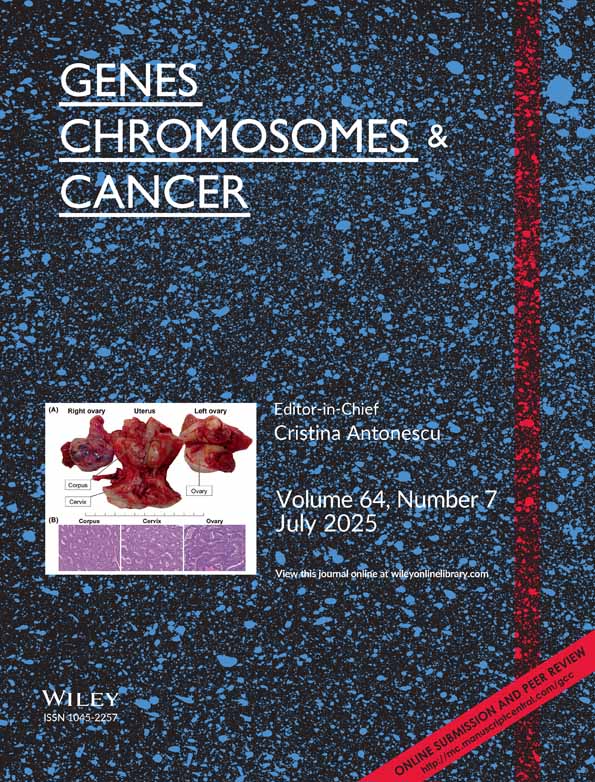Identification of novel regions of altered DNA copy number in small cell lung tumors
Abstract
Identification of the genetic alterations that occur in tumors is an important approach to understanding tumorigenesis. We have used comparative genomic hybridization (CGH), a novel molecular cytogenetic method, to identify the gross DNA copy number changes that commonly occur in small cell lung cancer (SCLC). We analyzed ten SCLC tumors (seven primary tumors and three metastases) from eight patients. We found frequent increases in DNA copy number on chromosome arms Sp, 8q, 3q, and Xq and frequent decreases in copy number on chromosome arms 3p. 17p, Sq, 8p, 13q, and 4p. The increase in copy number at 8q24 (MYC) and decreases at 17p 13 (TP53), 13q 14 (RB), and 3p have previously been identified in SCLC with other methods. Many of the other regions in which we detected common copy number changes have not been reported to be regions of common alteration in SCLC tumors. Comparison of copy number changes between a primary tumor and a metastasis from the same patient showed that they were more closely related to each other than to any of the other tumors. The results of direct CGH analysis of SCLC tumors reported here confirm the existence of copy number changes that we identified previously by using cell lines. © 1995 Wiley-Liss, Inc.




